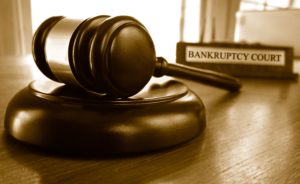 Section 1129 of the Bankruptcy Code governs confirmation of a Chapter 11 plan. Section 1129(b) of the Bankruptcy Code allows for confirmation of a plan over a creditor’s objection as long as certain requirements are met. One such requirement for cramdown is that the plan be “fair and equitable” and provide a secured creditor the “indubitable equivalent” of its claim. 11 U.S.C. §1129(b)(2)(A)(iii). A dispute exists as to whether or when “dirt-for-debt” plans, through which a debtor surrenders collateral to its lender, provides the lender with the indubitable equivalent of its claim. In “dirt-for-debt” plans, the debtor uses Section 506(a) of the Bankruptcy Code to value property and determine whether the property to be surrendered provides the indubitable equivalent of the secured claim. Therefore, the success of a dirt-for-debt plan is predicated entirely on the court’s valuation of the collateral. See, In re Arnold and Baker Farms, 85 F.3d 1415 (9th Cir.1996) (wherein the court held that a plan which provided for a partial “debt for dirt” distribution, i.e., which proposed to satisfy the secured creditor’s claim by transferring to the creditor 566.5 acres of the 1320 acre project securing the debt, was not confirmable because it did not provide the creditor with the indubitable equivalent of its secured claims required for cramdown).
Section 1129 of the Bankruptcy Code governs confirmation of a Chapter 11 plan. Section 1129(b) of the Bankruptcy Code allows for confirmation of a plan over a creditor’s objection as long as certain requirements are met. One such requirement for cramdown is that the plan be “fair and equitable” and provide a secured creditor the “indubitable equivalent” of its claim. 11 U.S.C. §1129(b)(2)(A)(iii). A dispute exists as to whether or when “dirt-for-debt” plans, through which a debtor surrenders collateral to its lender, provides the lender with the indubitable equivalent of its claim. In “dirt-for-debt” plans, the debtor uses Section 506(a) of the Bankruptcy Code to value property and determine whether the property to be surrendered provides the indubitable equivalent of the secured claim. Therefore, the success of a dirt-for-debt plan is predicated entirely on the court’s valuation of the collateral. See, In re Arnold and Baker Farms, 85 F.3d 1415 (9th Cir.1996) (wherein the court held that a plan which provided for a partial “debt for dirt” distribution, i.e., which proposed to satisfy the secured creditor’s claim by transferring to the creditor 566.5 acres of the 1320 acre project securing the debt, was not confirmable because it did not provide the creditor with the indubitable equivalent of its secured claims required for cramdown).
Courts which have considered the issue in contested confirmation hearings have followed different valuation methodologies. Some courts have valued the land at liquidation prices, In re Simmons, 113 B.R. 942, 947 (Bankr.W.D.Tex.1990), others have used a fair market value, after deducting the costs of holding, marketing disposing the property, In re Stockbridge Properties I, Ltd., 141 B.R. 469, 472 (Bankr.N.D.Ga.1992), and still others discount the land’s expected ultimate sale value to a present value to reflect the time needed to dispose of the property, In re Arnold and Baker Farms, 85 177 B.R. at 657.
In re Park Forest Development Corp., 197 B.R. 388 (Bankr.N.D.Ga.1996) stands for the proposition that for purposes of confirming a “dirt for debt’ plan, under which the Chapter 11 debtors is to deed back property to the secured creditor, the value given for the real estate should be very conservative and must allow the secured creditor an ample margin of error. The court should consider the costs of maintaining, marketing and selling the property during the disposal period.
In In re Investors Lending Group, LLC, 489 B.R. 307 (Bankr.S.D.Ga.2013), the debtor proposed a “partial” dirt-for-debt plan in which the debtor would surrender certain collateralized property. Here, the court stated that with such a plan, “foreclosure or liquidation type value” is the proper valuation method to be used. Id. at 313. The court stated that for such plans, the valuation decision must be “conservatively or sparingly applied as to ensure that the lender forced over its objection to accept property in satisfaction of a claim receives the indubitable equivalent of cash.” Id. at 314.
In Bate Land & Timber LLC, 877 F.3d 188 (4th Cir.2017), the court considered a partial debt-for-dirt plan and stated that in the bankruptcy context, “[t]he phrase ‘indubitable equivalent’ … means in essence, that the treatment afforded the secured creditor must be adequate to both compensate the secured creditor for the value of its secured claim, and also insure the integrity of the creditor’s collateral position.” Id. at 192 (quoting 4-506 Collier on Bankruptcy §506.03 (16th ed.2017)). The court disagreed with the argument made that partial dirt-for-debt agreements can never provide a creditor with the indubitable equivalent of its secured claim because property valuations are inherently uncertain. It noted that the fact that there are variations in appraisals for a parcel of land does not undercut a court’s ability to arrive at a valuation that reflects the indubitable equivalent of a secured claim. The court also noted that bankruptcy courts have expertise in valuing land in the bankruptcy context.
Additionally, in an effort to hedge the uncertainty inherent in property valuation, Bate Land & Timber noted that courts should take a conservative approach to determining fair market value. However, it then stated that in valuing property, a bankruptcy court may choose to consider a property’s “highest and best use” instead of its current physical condition. As support, the court cited to In re Thoburn Ltd. P’ship, 513 B.R. 887, 888 (Bankr.E.D.Va.2013), and In re Sailboat Props., LLC, 2011 WL 1299301, at *2 (Bankr. E.D.N.C. Mar. 31, 2011).
Matthew T. Gensburg
[email protected]

